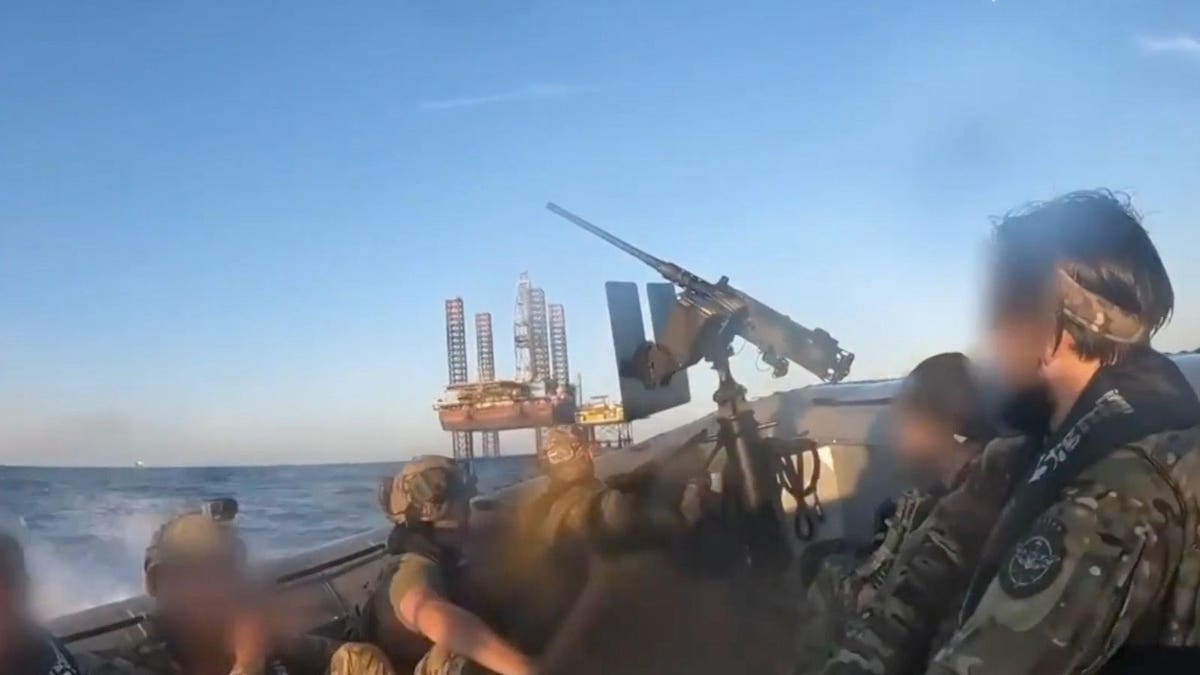Ukrainian commandos riding in gun-armed rigid-hull inflatable boats raided two Russian-controlled oil platforms 25 miles east of Snake Island in the western Black Sea in a series of raids beginning in late August.
The commandos ultimately boarded the so-called “Boyko Towers” platforms, seized a radar and some rockets and survived a gun run by a Russian Sukhoi Su-30 fighter-bomber. A Ukrainian missileer firing a man-portable anti-aircraft missile apparently damaged the Sukhoi and forced it to break away.
Ukraine’s military intelligence agency characterized the raids as resulting in the permanent capture of the platforms—actually, “liberation” would be more accurate, as Russian forces seized the platforms from their Ukrainian owners back in 2015. “For Ukraine, the operation of returning the drilling platforms had a strategic significance,” the intel agency stated.
But it’s more accurate to say the Ukrainians have denied—at least for now—the Russian exploitation of the platforms for military purposes. There’s a good chance neither country fully can control the platforms unless and until the balance of power in the Black Sea significantly shifts.
That, however, is a kind of win for Ukraine. In dismantling Russia’s defensive architecture in the western Black Sea, Ukraine is making it more and more dangerous for the surviving vessels of the bottled-up Russian Black Sea Fleet to operate anywhere near the Ukrainian coast with any degree of confidence.
At the same time, Kyiv’s forces also are creating a zone of relative safety through which grain ships can sail to and from Odesa or Ukraine’s ports on the Danube River. “Deprived of surveillance equipment stationed on these towers, Russia loses the capability to fully control the Black Sea waters,” the intel agency stated.
After capturing the two oil platforms in 2015, the Russians moved them closer to the Ukrainian coast—and installed surface-search radars as well as support equipment for helicopters. The platforms functioned as naval sensor outposts with a secondary role of refueling and rearming assault helicopters.
Think of the Boyko Towers as the middle link in a chain of Russian naval installations stretching from occupied Crimea with its excellent ports through the western Black Sea to Snake Island, which lies astride the main grain-shipping route 80 miles south of Odesa.
Russian forces captured Snake Island on the first day of Russia’s wider war on Ukraine in late February 2022—and held it until last summer, when a combined force of Ukrainian commandos, fighter-bomber pilots, drone crews and long-range howitzer gunners ejected the Russians from the tiny treeless island.
Today neither side keeps troops on Snake Island, although it’s likely the Ukrainians have greater freedom of movement to and from the island. The same outcome is likely for the Boyko Towers.
The big, mostly immobile oil rigs are easy targets for anti-ship missiles, armed drones, helicopters and fighter-bombers. If either side tries permanently to occupy the platforms, there’s very little preventing the other side from striking the platforms—and making their garrisons very unhappy.
Consider what a sextet of U.S. Navy destroyers did to two oil platforms Iranian forces were using as staging bases in the Persian Gulf in 1988. Amid escalating Iranian attacks on shipping through the Gulf, the American ships surrounded the platforms, shrugged off some half-hearted defensive gunfire and then blasted the platforms into burning hulks.
White House spokesman Marlin Fitzwater hilariously called the fiery destruction of the platforms a “measured response.”
The Boyko Towers are no less vulnerable. When, during the same 1987-1988 clash with the Iranians, U.S. forces adapted a pair of oil-support barges into lightly-defended commando bases, the barges’ crews complained they were being “hung out to dry.”
There’s no compelling reason for Kyiv to hang any of its own troops out to dry by stationing them on the Boyko Towers. What matters is that the Russians can’t use the platforms to impede the flow of grain from Ukrainian ports north and west of the oil platforms—or use them to detect Ukrainian navy’s explosive-laden drone boats as they’re infiltrating the Black Sea Fleet’s ports in Crimea.
To those ends, it’s victory for the Ukrainians merely to keep the Russians off the oil rigs—even if they can’t themselves permanently garrison the same rigs.
Read the full article here





